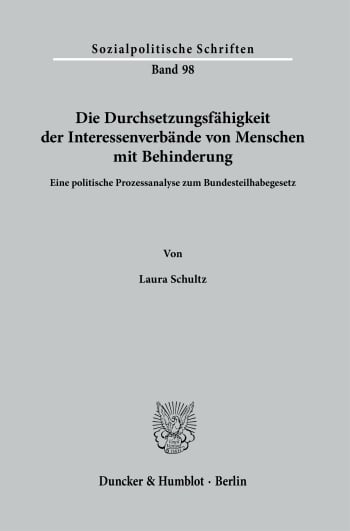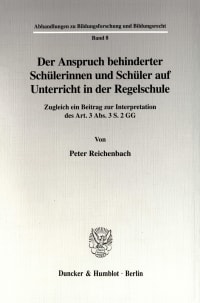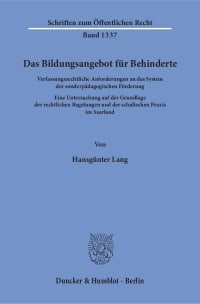Eine politische Prozessanalyse zum Bundesteilhabegesetz
Description
»The Assertiveness of Interest Groups of People with Disabilities. Process Tracing of the ›Bundesteilhabegesetz‹«: As part of the coalition agreement in 2013, it was agreed to create a new law for people with disabilities, the so-called Federal Participation Act (Bundesteilhabegesetz). In the dissertation it was assumed, that weak interests could exert influence on political decision-making situations. Under these circumstances causal mechanisms could be identified particularly well, regarding the use of power resources of weak interests. A range of support of different actors, the common goal of implementing the UN-CRPD and the use of different power resources led to assert some of the weak interests' demands.
Overview
A. Einleitung
B. Theoretische Zugänge
Begriffstheoretische Grundlagen – Der Policy-Cycle – Die Theorie der schwachen Interessen – Der Machtressourcenansatz
C. Die Entwicklung der Rechte von Menschen mit Behinderung
Die UN-Behindertenrechtskonvention – Das SGB IX, BGG und BTHG
D. Das methodische Vorgehen
Die politische Prozessanalyse und ihr Ablauf – Auswertung: Die inhaltlich strukturierende qualitative Inhaltsanalyse
E. Ergebnisse
Der Reformprozess des Bundesteilhabegesetzes: Relevante Phasen im Reformprozess des Bundesteilhabegesetzes – Beteiligte Akteur*innen im Reformprozess – Reformphase 1 (2001 bis 2013): Der Weg zum Koalitionsvertrag der 18. Legislaturperiode – Reformphase 2 (Mitte 2014 bis Frühjahr 2015): Die AG BTHG – Ermächtigung durch Ermöglichung – Reformphase 3 (Ende 2015 bis Spätsommer 2016): Emotionale Handlungsorientierung – Reformphase 4 (Spätsommer 2016 bis Ende 2016): Die Kompetenz zu stören – Rechtliche Änderungen durch das BTHG im Jahr 2017 – Zusammenfassung der Jahre 2013 bis 2016: Der kausale Mechanismus
F. Genutzte Machtressourcen und der Machtressourcenansatz 2.0
G. Schlussbetrachtung
Anhang
Dokumentenliste und Internetquellen der Dokumentenanalyse (Kap.E.)
Literatur- und Stichwortverzeichnis






